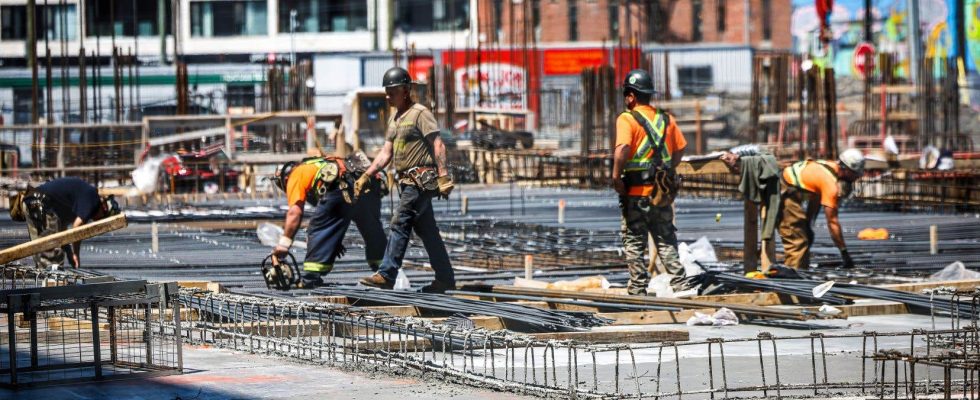Already short of tens of thousands of workers, the Canadian construction industry is not at the end of its troubles. Experts warn that a wave of retirements will occur in the coming years, at a time when the country is already lagging behind in its housing needs.
“The labor shortage in the construction industry, not only will it not go away, but it will get worse,” warns the dean of the faculty of construction at the Southern Alberta Institute of Technology , Reva Bond.
The number of jobs available in the construction industry is currently at an all-time high. According to CIBC Deputy Chief Economist Benjamin Tal, some 80,000 jobs are unfilled.
This shortage of workers is driving up construction costs and hurting business productivity at a time when the residential construction industry is under pressure to meet the demands of a growing population.
The Canada Mortgage and Housing Corporation (CMHC) predicts that by 2030, Canada will need 3.5 million more homes than will be built by then if current trends continue.
The number of homes built per year even fell slightly recently, from 271,000 in 2021 to 260,000 in 2022. Last May, the annual pace of housing starts fell 23% month-over-month, leading CMHC’s chief economist to predict that only 210,000 to 220,000 new homes will be built by the end of the year.
Several factors explain this decrease in housing starts, according to the CMHC. Labor shortages are one of them, along with higher interest rates, rising construction costs and zoning issues.
Under these circumstances, it will be “extremely difficult” to meet housing needs, acknowledges CMHC’s Deputy Chief Economist, Aled ab Iorwerth.
A predictable situation
The labor shortage in the construction industry is not going away anytime soon, according to experts in the field. “This is a problem that has been brewing for several years,” said Canadian Home Builders’ Association President Kevin Lee.
Mr. Lee explains that, for more than twenty years, we have witnessed a reorientation of the younger generations, who are moving away from the skilled trades and towards what he calls the “knowledge economy”. And, at the other end of the spectrum, about one in five workers in the industry will retire over the next decade.
“But it’s obvious that the need to build homes has never gone away,” Lee said, adding that there’s also a growing demand for home improvement workers.
However, the labor shortage is also driving up wages, as bargaining power shifts to the side of potential recruits. RBC figures prove it: workers pocketed 9.4% more wages in 2022 than a year earlier — a rise nearly twice as high as in other sectors of the economy.
Difficult to recruit
Despite their best efforts to woo high school kids, including with scholarships, schools like the Southern Alberta Institute of Technology are still struggling to attract new recruits, notes Ms.me Jump. Specific campaigns aim to recruit women and people of cultural diversity, but the expert believes that there has been too much focus on recruitment and not enough on retaining workers.
Companies need to be encouraged to implement more inclusive practices, she says, to ensure that recruits from different backgrounds stay in the field for a long time.
In a recent report, CMHC also proposes some solutions to address housing needs, including the conversion of commercial buildings into housing, the construction of more residential towers, the addition of incentives to convince more young people to pursue careers in the field of construction and the creation of more targeted immigration programs.
Mr. Lee, of the Canadian Home Builders’ Association, is also pleased that a higher percentage of candidates for immigration will be reserved for people who work in skilled trades. In May, the federal government announced the launch of an immigration program called Express Entry, which aims to attract workers for the sectors that need them the most in Canada, including construction.
But while the arrival of more skilled immigrants is welcome, Mme Bond says it’s important for the industry to look at how to retain these workers. As with the younger generation the industry is trying to woo, she worries about the lack of attention to how to make construction jobs attractive in the long run.
“Right now, we’re not preparing the next generation to succeed,” she warns.
